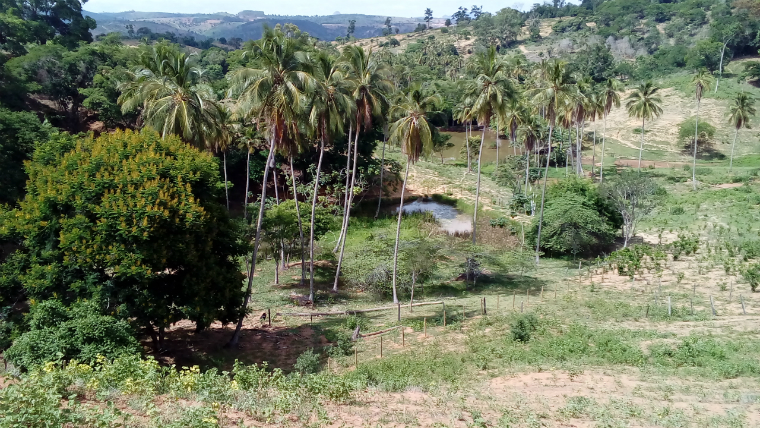In partnership with the Earth Institute the expectation is to recover five thousand springs within the next 10 years
An important step in the recovery of the Doce River has just been completed. In total, 511 springs of tributaries of the Doce River Basin in Minas Gerais and Espírito Santo have been recovered. The work was done through a partnership between the Renova Foundation and the Earth Institute. The expectation is to recover five thousand springs within the next 10 years
Of the 511 first recovered springs, 251 are in Minas Gerais and 260 in Espírito Santo. The work includes the basins of the Pancas Rivers, along the municipalities of Pancas, Governador Lindenberg, Marilândia and Colatina, and Santa Maria do Doce in Colatina, Espírito Santo.
In Minas Gerais, the actions took place in the basin of the Grande Suaçuí River in the municipalities of Itambacuri, Frei Inocêncio, Jampruca and Campanário. The choice of the priority areas included the participation of the Basin Committees and local community leaders. The Doce River Basin Committee (CBH-Doce) has the responsibility to indicate in which basins the Renova Foundation should start the spring recovery works.
IN THE FIELD
The farmer Antonio Fantini has a 10-hectare property in Itambacuri (Minas Gerais), located in the Doce River Valley. The partnership between Renova and the Earth Institute provided the fencing of two springs on the site of Fantini, sources that form the Cupim Stream. “It’s an initiative that pays off. I hope to benefit from this action. I already had some projects to protect these springs, I would even fence them on my own account. The initiative came at the right time”, he explains. The work on the site of the farmer was completed in December 2016 and needed 240 stakes and 314 meters of wire for each spring.
Fantini, who raises about 30 head of cattle, says he understands the importance of the protective measure to prevent the cattle from negatively impacting the springs, mainly by soil compaction. He adds that awareness among the farmers in the region is welcome. “Some take care of the springs, others don’t. This kind of work is always important. In the end, it will contribute to the recovery of the Doce River”, concludes Fantini.

Of the 511 first recovered springs, 251 are in Minas Gerais and 260 in the Espírito Santo. | Photo: Release
PROCESS PHASES
At this phase of the recovery process, farmers received technical guidance and all material to fence the spring areas such as, stakes, wires and staples, as well as a financial incentive to do the job. Then, 217 farmers registered and joined the project, understanding the importance of the initiative for the environment and to maintain the properties productive.
The idea is that the protection by means of the fencing will keep the cattle from trampling in the areas of springs and avoid plant degradation, favoring forest regeneration. Thus, the soil will be kept in favorable conditions to retain rainwater, ensuring a quality resource for domestic and agricultural activities of the properties, such as irrigation, pasture and fish farming, for example.
The next phase will be completed by September 2017 and provides for the implementation of septic tanks on properties, to prevent sewage flowing into the zone of saturation. Furthermore, it features the installation of dry ponds and retention basins, avoiding entrainment of the soil and ensuring the capture of rainwater for reuse.
From November this year until January 2018, during the rainy season, there will be also the reforestation of 300 hectares (741 acres) in Minas Gerais and Espírito Santo. Soil preparation, fertilization and planting of seedlings – species of Atlantic Forest – in areas around the springs are actions that will be part of the activities.
EARTH INSTITUTE
The Earth Institute is the result of the initiative of the couple Lelia Deluiz Wanick Salgado and Sebastião Salgado, who a little over a decade ago, acquired a cattle farm in the town Aimorés in Minas Gerais from Sebastião Salgado’s family, facing a scenario of environmental degradation. They decided: return to nature what decades of environmental degradation destroyed. They mobilized partners, raised funds and in April 1998 founded the environmental organization dedicated to the sustainable development of the Doce River Valley. The Earth Institute is a civil non-profit organization established in April 1998, which operates in the region of the Doce River Valley between the states of Minas Gerais and Espírito Santo. It is a region of Brazil that experiences the consequences of deforestation and disorderly use of natural resources such as drought, soil erosion and the lack of conditions for rural people to live and prosper.
Currently the Earth Institute has 22 members; 2 founding and lifetime members, 8 founding members and 12 active members. Its main activities involve the ecosystem restoration, production of Atlantic Forest seedlings, environmental extension, environmental education and applied scientific research.
